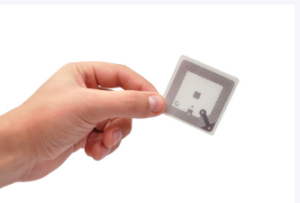From the aspiring novice to the seasoned virtuoso, musicians of all skill levels find inspiration and connection through their Martin guitars. This bond transcends wood and strings, forming an intangible link between the artist and the instrument.
Rachel works in Prefinish at Martin and loves seeing each guitar through to the end. She takes pride in her work and wants to ensure the instruments leave her department in top condition. For more information about the Martin guitar craftsmanship, click here.
The Sound
 The sound of a Martin guitar results from years of experience, innovation and attention to detail. The renowned acoustic-electric guitars produce full, rich tones that are deep and balanced, with clear highs that are not overpowered by bass timbre.
The sound of a Martin guitar results from years of experience, innovation and attention to detail. The renowned acoustic-electric guitars produce full, rich tones that are deep and balanced, with clear highs that are not overpowered by bass timbre.
The back and side woods are critical to the guitar’s tone. Rosewood helps the guitar stand out from other instruments, while mahogany provides a more balanced tonal spectrum. Many performers prefer a mahogany and spruce combination, providing even dynamics whether performing live or in the studio.
Several guitars’ top-performing woods are sourced from sustainable forests and processed to minimize environmental impact. The woods are seasoned and prepared for finishing using natural protein glues. This careful process ensures that every guitar carries the Martin name with pride. The result is a world-class guitar that will inspire generations to play and listen. The company is deeply committed to quality and continues to innovate with new designs that blur the lines between acoustic and electric guitars.
The Materials
The modern guitar is made from various materials, including metals and plastics, that offer increased performance and durability over wood. However, the core of a Martin guitar is still wood and string.
The company has had to adapt to changing market conditions to remain competitive. It has included embracing nontraditional construction materials to attract more mid-level buyers, such as sip sides and necks.
Regardless of the materials, each instrument must meet rigorous quality standards to ensure it is worthy of carrying the Martin name. Each guitar undergoes a detailed inspection process in the factory, using a microscope between each coat of lacquer to check for dents, chips and scratches.
The neck setting machine ensures that the guitar’s neck and body fit perfectly, reducing the risk of bending or cracking over time. Each guitar also undergoes an in-depth final inspection by experienced luthiers. It includes thoroughly examining the guitar’s nut and saddle for proper height and placement.
The Craftsmanship
Christian Frederick Martin’s unwavering commitment to quality and attention to detail set his guitars apart from the competition. His innovations, such as the X-bracing pattern and the dovetail neck joint, became benchmarks for acoustic guitar makers to follow. As demand grew, musicians from diverse genres sought out Martin guitars to help create their music.
Rachel has been at Martin for four years and works in Prefinish, which includes sanding bodies and necks, diamond shaping, and reworking. Her favourite part of her job is seeing the looks on people’s faces when they pick up their new instrument. She puts her heart into each guitar she works on, just like the musicians.
The Story
In the decades following the Civil War, Martins gained worldwide fame. Their sound was embraced by musicians, from bluegrass and country music to rock and folk. They were strummed around campfires during the war, floored the crowd at Woodstock, and can still be heard on countless classic and contemporary songs.
Christian Frederick Martin remained committed to craftsmanship and quality, ensuring that each instrument was carefully built. He refined guitar design, experimenting with body shapes and bracing patterns to improve playability and tone. His commitment to excellence established a standard for the industry.
Northeast Music Center is proud to be an authorized Martin dealer. Our team members are familiar with the company’s history and philosophy, and we take great pride in offering our customers a wide selection of these fine instruments.
 Yellowfin tuna are giant, fast-growing tuna that can grow up to 6 feet long and 400 pounds. They are distinguished from bluefin and bigeye tuna by their long bright-yellow dorsal fin and a yellow strip down the side of their body.
Yellowfin tuna are giant, fast-growing tuna that can grow up to 6 feet long and 400 pounds. They are distinguished from bluefin and bigeye tuna by their long bright-yellow dorsal fin and a yellow strip down the side of their body. Real-time visibility is a vital component of every supply chain operation. For manufacturers, it gives them insight into production volumes and manufacturing inefficiencies; for logistics vendors, it provides key information about cargo batches and consignments that lets them manage day-to-day operations more efficiently. For consumers, it keeps them updated about delivery status and enhances their overall experience.
Real-time visibility is a vital component of every supply chain operation. For manufacturers, it gives them insight into production volumes and manufacturing inefficiencies; for logistics vendors, it provides key information about cargo batches and consignments that lets them manage day-to-day operations more efficiently. For consumers, it keeps them updated about delivery status and enhances their overall experience.